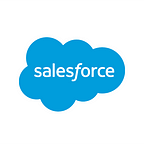How to Market Your Event: 5 Strategic Tips to Stay Sane and Successful
By Heike Young
We’re living in the age of the connected customer — where experiences are tantamount. And what could be a more impactful customer experience than an in-person event?
Whether you’re a tech company or a retailer, events are a brand’s opportunity to get people in a room and wrap the brand all around them. At least, that’s what successful events do.
From Dreamforce and World Tours to the many other events we support year-round, events are a huge part of the marketing we do at Salesforce. But as an event marketer, how do you get the word out and make these experiences resonate with your attendees?
On this week’s episode of the Marketing Cloudcast — the marketing podcast from Salesforce — we’re discussing event marketing and diving deep into the planning, management, and promotion of a successful event. For high-level strategy and on-the-ground details, we talked to one of our own experts: Marissa Kraines, Senior Manager of Strategic Events at Salesforce.
If you’re not yet a subscriber, check out the Marketing Cloudcast on iTunes, Google Play Music, or Stitcher.
Take a listen here:
You should subscribe for the full episode, but here are five takeaways about event marketing from our conversation with Marissa.
1. Put on your product marketing hat.
In addition to running events like Dreamforce and Salesforce World Tour, Marissa’s team also manages the Salesforce presence for third-party events like NRF. Regardless of what her team is working on, she says, “What’s key is that we have a machine that not only gets people to these events, but also makes sure they’re equipped and educated so that they can make the most of the event.”
This requires thinking like a product marketer. “While I am an event marketer, in a lot of ways I am a product marketer. For Salesforce, our events are some of our biggest products. I’d say that Dreamforce is probably the biggest product at Salesforce. We are marketing, we are creating build-up material, we are capturing materials at the event — and making sure people are making the most of it,” Marissa says.
2. To stay sane, stay organized.
Whether you’re managing a B2B tech event like Dreamforce or something small and local, every event has a million many moving parts.
When asked how she stays organized, Marissa says she’s long relied on checklists and collaborative docs to work with all of the different vendors and teams. And she’s recently started to rely more heavily on Quip.
What makes Quip so great? “It’s easy to use on your computer, offline, and even on your phone. I’m able to update pretty much everything in real time, no matter where I am or what device I’m on. Having [these] updates has been so helpful,” says Marissa.
3. Test event content online.
Most events don’t have a Dreamforce-sized budget or attendee list. But every event creator out there wants to craft events that resonate with their customers. Marissa advises that you ensure you have an audience for that session, keynote, or even entire event before you invest time and money into the experience.
Her astute suggestion: “One of the easiest things to do when you’re creating an event is to test via online channels. It’s so easy to do a Facebook live stream, where you’re interacting directly with your audiences and you’re not spending the money to put on a huge event onsite. Testing your content, creating value, and bringing together people online can be just as powerful or even more so than getting everyone on site in a single location. That’s a very good starting block for anyone looking into events.”
“From there you can gauge whether you have the audience to come to an onsite event,” she says.
4. Get creative to get your sales team involved.
Events are a perfect way for your sales team to spend time with key prospects. To make this happen, marketers need to work smarter with sales before an event actually takes place.
Marissa shares, “We create custom content prior to an event to enable our sales team to sell events to their key customers. We provide, within Salesforce, lists and reports that drill down on who’s in the area of an event — and learning everything about them.” This way, the audience is filled with high-value members.
5. Provide behind-the-scenes fun with Snapchat.
Marissa is a huge fan of Snapchat. (I am, too! Check out these 11 clever Snapchat marketing examples.) And she’s discovered that Snapchat can provide a missing link between the exciting event floor and those who couldn’t make it this time.
“People really have to take the initiative to come to our events. We give them a behind-the-scenes look with Snapchat. This is a huge way for them to get excited, be inspired, and go to their boss and say that they need to go to Dreamforce or Salesforce World Tour,” she says.
Marissa continues, “At Salesforce, we have such an amazing company culture. [Creating a Snap is] much easier than creating a very high-quality video about our Ohana. By showing an event on Snapchat, we’re showcasing our Salesforce culture.”
She’s also a huge fan of Snapchat geofilters. “Anyone who uses them at our event is giving us free branding,” she says.
And that’s just scratching the surface of our conversation with Marissa Kraines (@MarissaLK85). Get the complete scoop on Event Marketing in this episode of the Marketing Cloudcast.
Join the thousands of smart marketers who already subscribe on iTunes, Google Play Music, and Stitcher.
New to podcast subscriptions in iTunes? Search for “Marketing Cloudcast” in the iTunes Store and hit Subscribe, as shown below.
Originally published at www.salesforce.com.
